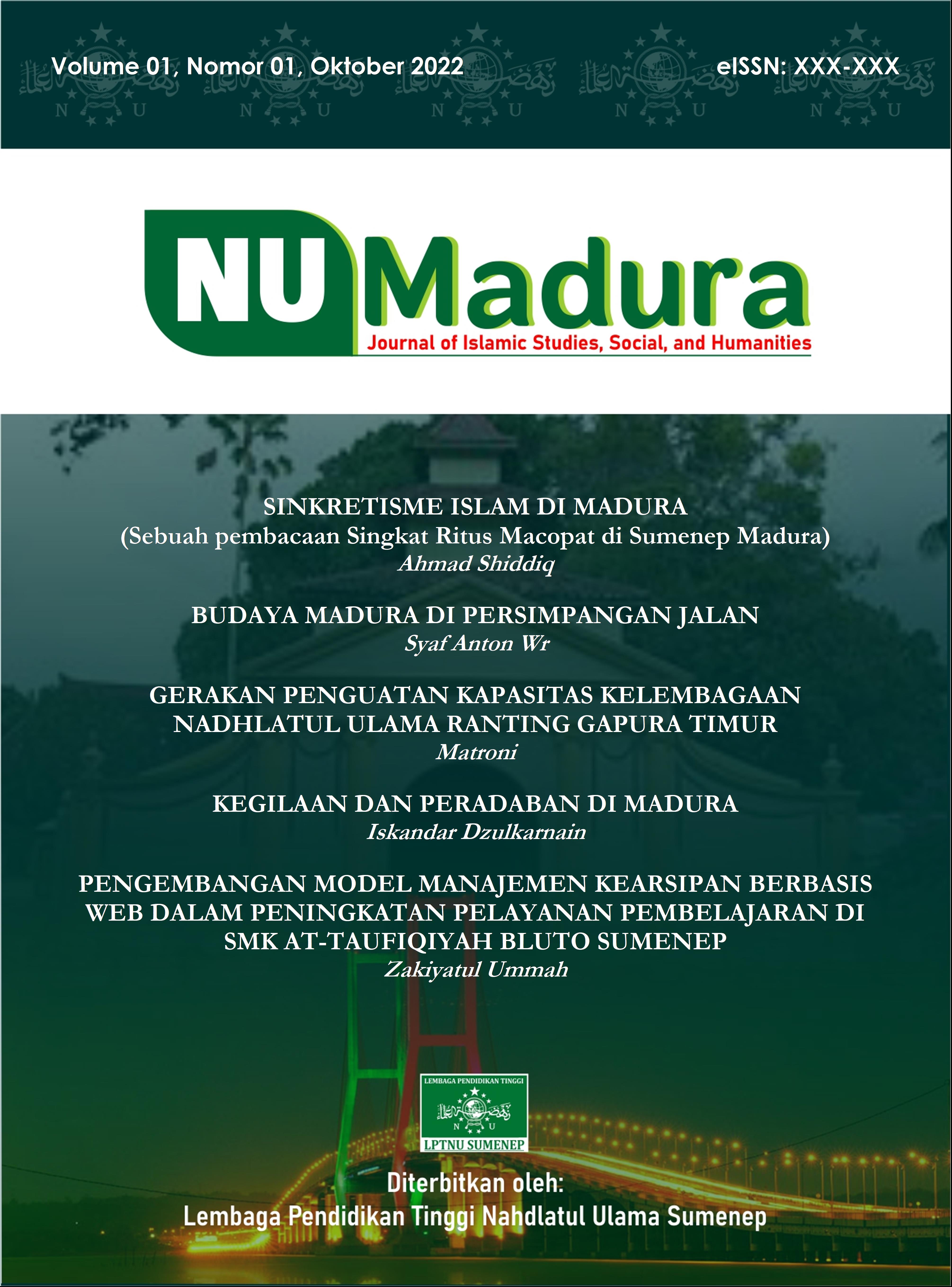Sinkretisme Islam di Madura
Sebuah pembacaan Singkat Ritus Macopat di Sumenep Madura
DOI:
https://doi.org/10.58790/numadura.1.1-2022.4Keywords:
Islamic Syncretism, Macopat Rite, Sumenep MaduraAbstract
This paper will describe the macopat rite in Sumenep Madura, assuming that the macopat tradition is well developed and is an effective medium in the spread of Islam in Sumunep by the guardians and sponsored by the palace in the use of the ancient Javanese language (kawi). Thus, this brief research can at least answer the question, namely: What is the macopat tradition in Sumenep Madura? and how is the element of Islamic syncretism in the macopat tradition in Sumenep Madura?. By using the library research method to inventory references about macopat that have been studied by previous researchers both at home and abroad who discuss the elements of syncretism by browsing various literatures. The term "syncretic Islam" actually contains a hidden assumption, that it is as if the main element there is Islam, while Javanese is an additional element that causes the main element to be imitated. Thus, the term also views Java as "the other". The macopat tradition in Sumenep has similarities with the mamaca art in Java. This indicates that there is a growing cultural similarity and there is a connection between these two adjacent islands. Even the language used in the Pegon Arabic script is Javanese. Macopat is a Madurese Islamic tradition, as well as Hindu-Buddhist heritage such as rokat pandhaba lema, pangur Gigi, and other Islamic events. So there is acculturation between religions. Even the implementation of the rokat ritual cannot be separated from elements of the Hindu-Buddhist tradition and is strengthened by elements of Islam.




